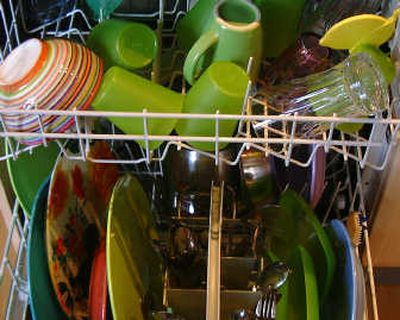New disposer deposes dishwasher

Q: Ever since a handyman installed a new disposer, I have been unable to use my dishwasher. The first time I turned on the dishwasher after the installation, water gushed everywhere. It looks like a hose wasn’t attached. I can’t get the handyman to return my calls. Can I fix this myself? — Joyce P., Palm Bay, Fla.
A: It sounds like the handyman didn’t finish the job, all right. It is possible to attach the hose yourself, although you might want a strong helper to handle this task as it will require levering a few things in and out of place while working underneath the sink cabinet.
Disposers have an area to connect the dishwasher’s drain hose, called the dishwasher nipple. The sink is draining just fine, which means the plug is in place. Locate this nipple, but don’t do anything yet.
•First, locate the dishwasher drain hose. Make sure it will reach the nipple on the disposer. If it is too short, you’ll need to replace the hose — measure the distance between the hose connection on the dishwasher and the nipple, head for the home-improvement store, and pick up a hose that is a couple inches longer than that. If it is too long, the drain hose can be cut to the proper length using a hacksaw or tubing cutter.
•Next, make sure the dishwasher drain hose can be properly secured — it should have a metal hose clamp on the end that will go over the nipple; if not, the home improvement store will have one. Now, you’re ready.
•Turn off power to the circuit controlling the disposer. Remove the plug in the nipple, using a screwdriver to pry it out. Slide the dishwasher drain hose completely over the nipple so that the end of the hose touches the disposer body. Tighten the metal hose clamp (use a Phillips head screwdriver and a pair of pliers to do this).
•Turn the circuit back on. Run the dishwasher, keeping an eye on the drain hose. If you’re really unsure, place a bucket underneath the disposer to catch any leaking water.
•You may have to readjust the hose’s position or tighten the clamp, but as long as the plug isn’t still in the nipple you shouldn’t have any more problems. And you’ll have your dishwasher back.